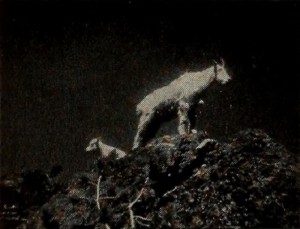
"Ralph O. Lund, whether he knows it or not, has adopted the same narrative technique used earlier in a nature film (The Gannets) whereby one of the wild creatures being pictured becomes the narrator. In Monarchs of the Mountain Tops, Mr. Lund's "Pete Smith" is an agile and bewhiskered mountain goat. His recurring comments enliven considerably the producer's study of the flora and fauna of Glacier National Park." Movie Makers, Dec. 1953, 334.
"Monkey's of the Snow Mountain is a touching film of northern Japan produced by Masatoshi Okochi of Japan. You will never believe how sorry you can feel for a tribe of monkeys in 15 minutes of snow, snow and more snow. The film is in color, mostly white. It took four years to film the seasonal cycle in its fullest. Here we have suffering not only by the subjects of the film but by the film maker as well. In spite of that, you'll enjoy it" PSA Journal, Nov. 1969, 57.
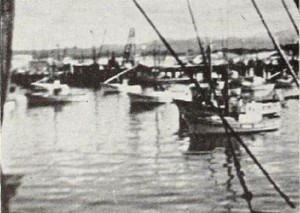
"Kenneth L. Lockwood is a newcomer to the tourney of Ten Best competition, but with Monterey Peninsula he seems to serve notice that his is a name with which to reckon. There is, throughout his immaculate 8mm. Kodachrome, a feeling of craftsmanship and care. Add to these fundamentals an unerring sense of composition and a nice eye for the importance of human interest — and you have an award winner in the making. Mr. Lockwood brings to the screen not only the windblown cedars and sun drenched missions, familiar symbols of the Monterey foreshore, but the life of its waterfront as well, redolent of fish, tarred nets and crabs steaming in a deep bellied kettle. One looks forward with interest to further work from this talented initiate." Movie Makers, Dec. 1942, 508.
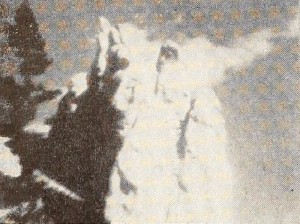
"With a thorough understanding of what constitutes human interest, L. Gordon Darby has produced in Mountain Playground an attractive record of the Banff-Jasper National Park area. Present, to be sure, are the majestic peaks, the Banff Springs Hotel with its surrounding flower gardens, Lake Louise and a picturesque river trip. But there are presented also the darting antics of a chipmunk, the dainty distrust of a cautious deer and the hungry bear within arm's reach of the camera. If camera steadiness had not been sacrificed for the ease of the hand-held camera, this attractive travelog might well have contended for higher honors." Movie Makers, Dec. 1952, 340.
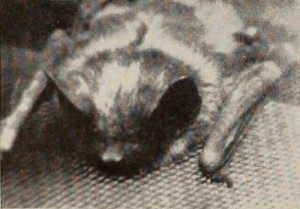
"Francis M. Spoonogle apparently keeps a large family of snakes, bats, bugs, slugs and praying mantises in his backyard, to talk to in his idle moments. It is a fascinating collection, though most of us would probably be just as well satisfied with a couple of dogs and cats. At any rate, in Movie Menagerie Mr. Spoonogle exhibits his prizes in some of the finest ultra-closeup studies ever to reach the 8mm. screen. Although playing on a small stage, his creatures seem quite uninhibited during their brief periods of stardom. For instance, the favorite pastime of the female mantis seems to be eating all other types of small life (including her husbands) which might offer interesting digestive experiences. Many of Mr. Spoonogle's other characters are of a sweeter nature, however, and the film does not leave you feeling hopeless about nature by any means." Movie Makers, Dec. 1947, 534.
"'Mystery in the Forest' came from Khoji Tsukamoto in Japan; a series of bird pictures of beauty and interest, with shots of heron chicks emerging from the shell outstanding" American Cinematographer, April, 1938, 173.
"Documentary. The flora and fauna in a forest in Japan. Winter landscapes and snow clearing (snow shovelled into large open baskets carried on the backs of women); swans flying over water; spring flowers with shots of Mount Fuji. A man using his fingers as a pan pipe to attract birds. The juichi (a kind of cuckoo), the nests with eggs of the grand thrush, greenfinch and the warbler. Chicks of the blue robin and snakes. A titmouse that has built her nest in a tomb. Greenhorn chicks; nests of night herons and the chicks; owls" (EAFA Database).
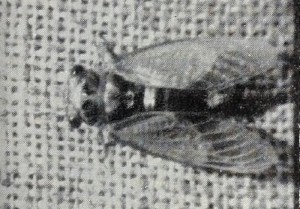
"There is a lively and rewarding sense of participation about Nature Campers which, despite its threatening length, should give this picture wide appeal. In it, an eager-eyed group of young people and a few engagingly raffish naturalists pursue their studies of the outdoors with enthusiasm — and sound cinematics. Birds, butterflies, frogs and fish are among the creatures which come before Herbert Shumway's camera. But they come there, not just in the stiff ultracloseups of the studio, but as a natural part of the picture's development. The background musical selections are an enjoyable addition to an entertaining picture." Movie Makers, Dec. 1951, 412.
"Animals found in the mountains of BC: birds, squirrels, chipmunks, black bear, deer, bighorn sheep, mountain goats, etc." (BC Archives)
This film appears to have been made during the years 1944-1950.
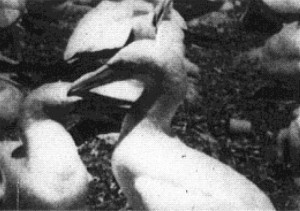
"Jim takes us with him on a visit through the gate at "Kidnapper Bird Sanctuary" and on to "Clifton Domain - Cape Kidnappers" along the path with its perils of falling rocks to the nesting ground of the Gannets for an absorbing and intimate visit with the birds as they build, nest, and care for the young" PSA Journal, Oct. 1961, 47.
"Zoological survey trip to Triangle Island; sea lions, puffins, and other birds, plus Indian artifacts." (BC Archives)
Total Pages: 19